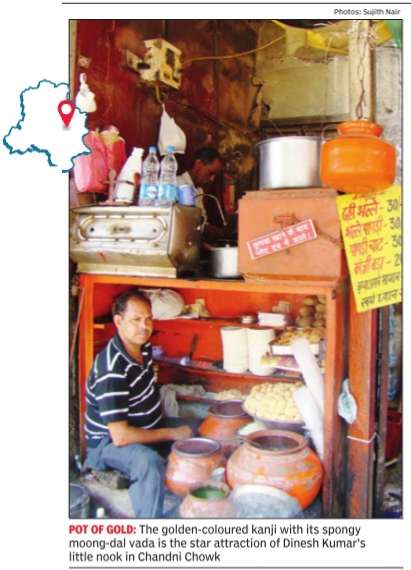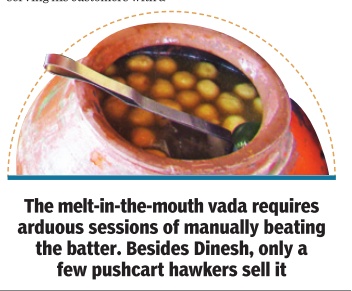Delhi: Cuisine
This is a collection of articles archived for the excellence of their content. |
Kanji Vada
The Times of India, September 26, 2015


Dinesh Kumar, who sells kanji vada -from an alcove in a wall, which he shares with a chaiwala -said he would grant me a three-minute interview. He sits opposite a bridal-wear store, which till a few months ago housed the iconic sweetshop, Ghantewala, in Chandni Chowk.
“Kanji vada is a traditional recipe common to Vaishya, Khatri and Kayasthcuisines.It used to be prepared for Holi and during marriages,“ says food historian Pushpesh Pant. “Alas, it has become almost extinct.“ Dinesh says the entire family gets involved in the preparation at their rented house in Mori Gate. A few pots of kanji are made daily and left to ferment. Vadas, red meetha chutney and pudina chutney are prepared fresh. Sundays, when his shop is closed, are spent in making masalas that he sprinkles liberally over his dahibhalla and bhallapapdi. Dinesh says the spongy moong dal vadas and kanji, which customers find so irresistible that they keep asking for refills, are the result of backbreaking effort -the reason why it's becoming a dying art. Apart from Dinesh, just a few push-cart hawkers sell it in Old Delhi. Pant says the melt-in-the-mouth vada requires hard labour, involving arduous sessions of beating the batter with hands; the kanji has no other ingredients save mustard powder and salt.Apart from its great taste, kanji is also traditionally regarded as a good digestive.